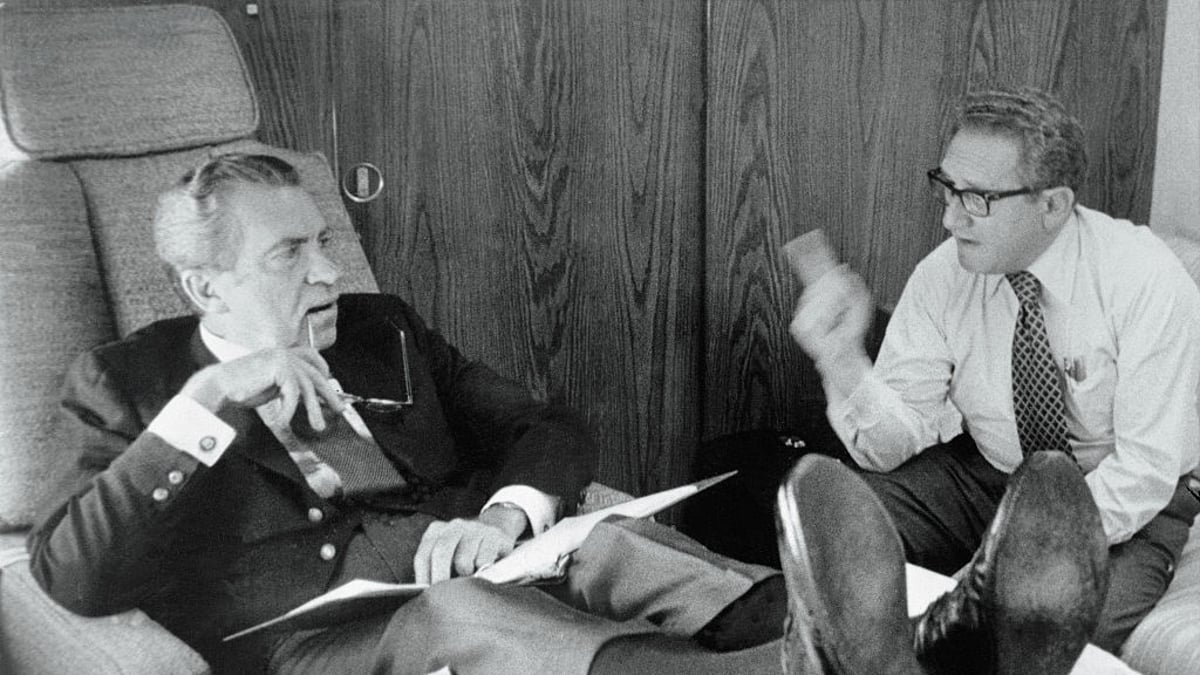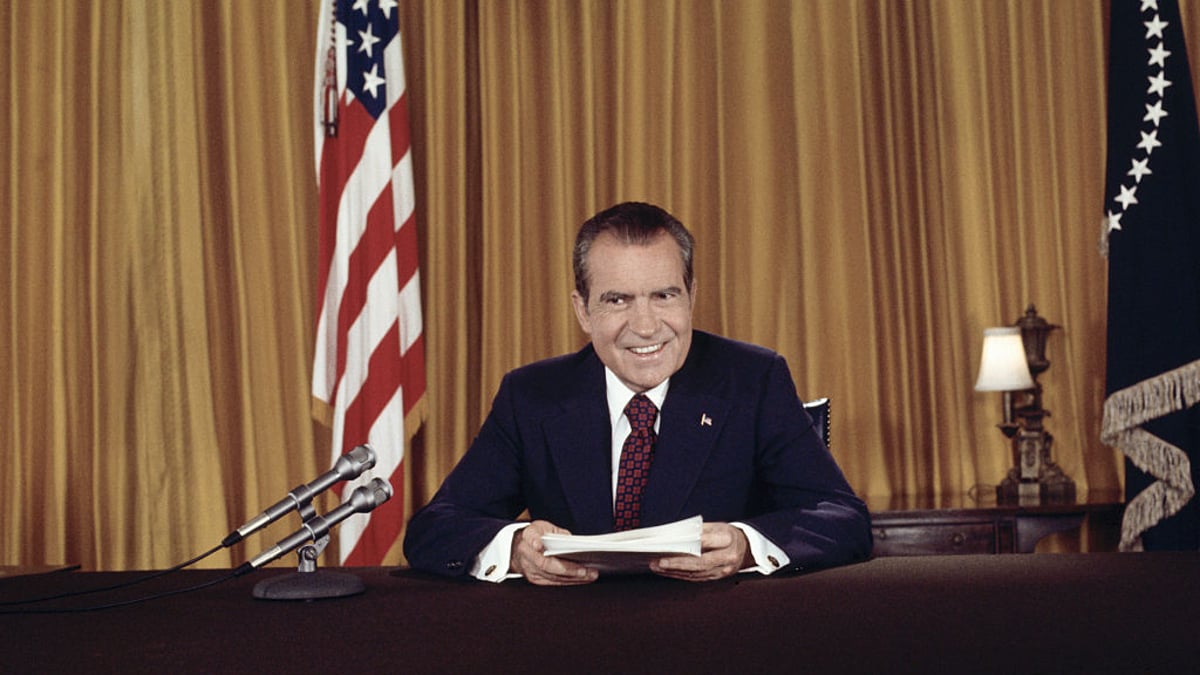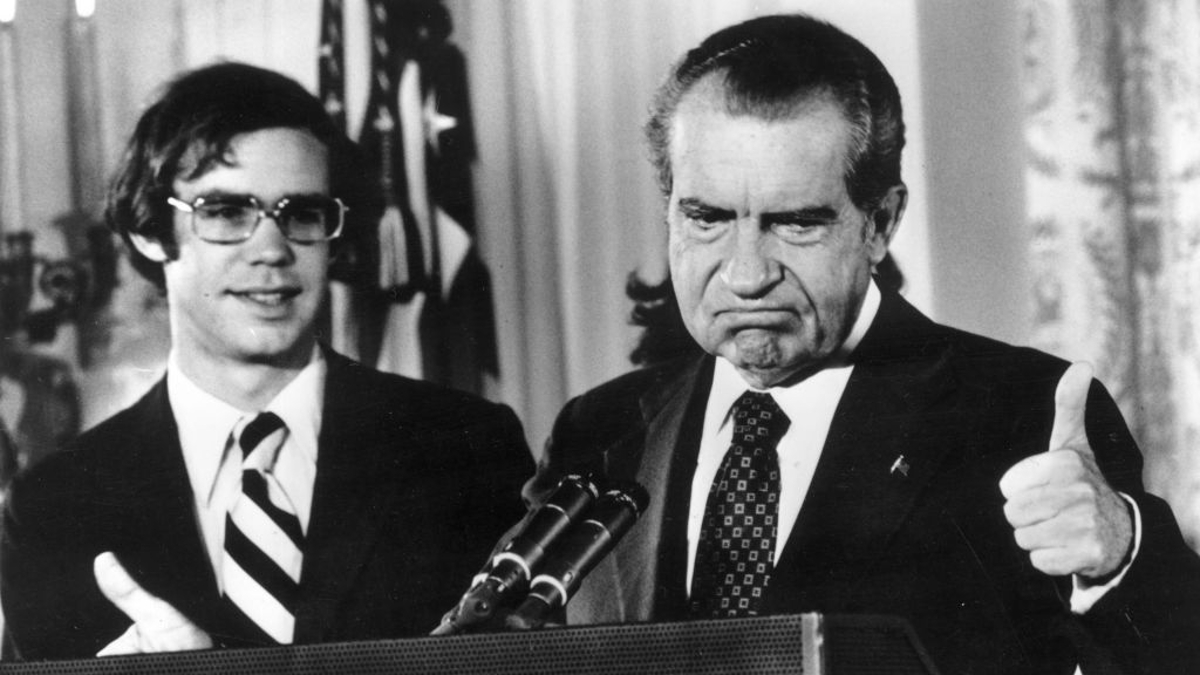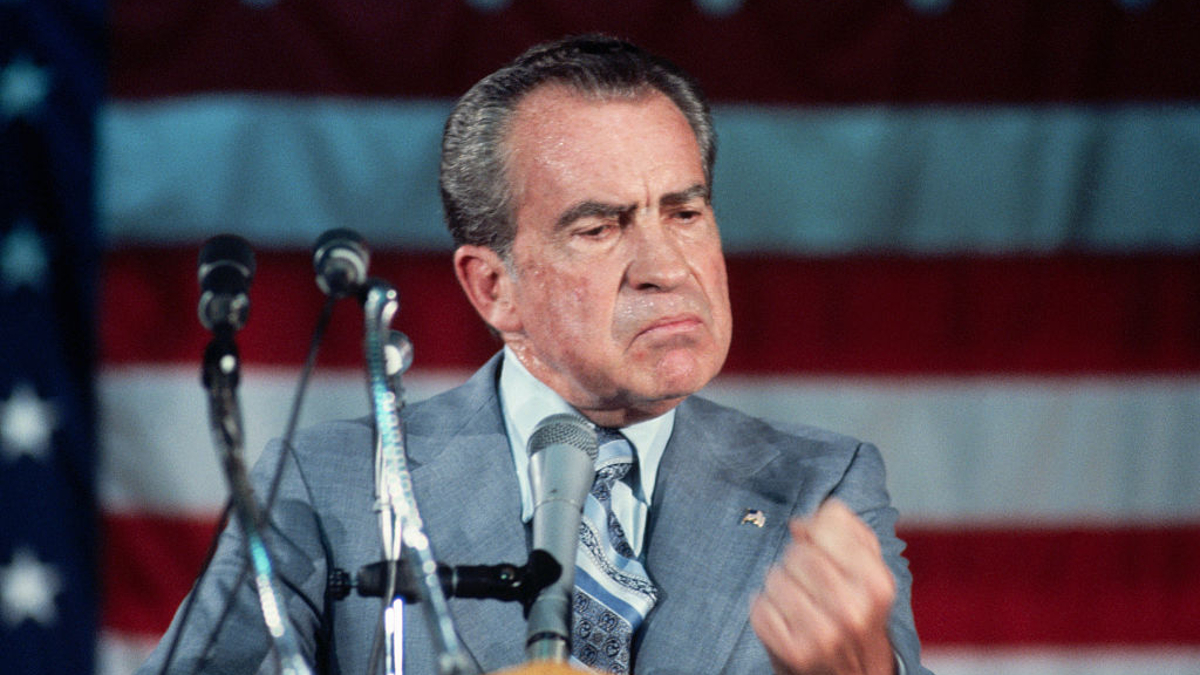It can feel like the insanity happening at the moment around Donald Trump is unprecedented, but any student of history will tell you that the era of Richard Nixon was just as unhinged.
It’s almost hard to know where to begin with Nixon. You could start with his excessive drinking, then move on to the unbridled bigoted rants he recorded himself making, the paranoia that makes most tweakers seem sane, and of course all the crimes and scandals.
Yes, the scandals, many of which were also illegal. There is, of course, the big one that led to his resignation: Watergate. However, it would be remiss not to mention all the war crimes he got up to with his pal, the ever-ghoulish Henry Kissinger, or his veep Spiro Agnew, whose corruption and violent tendencies made Nixon look like an upstanding citizen.
Yet, despite abusing the highest office in the land in the worst possible way, Nixon died without ever having set foot in a jail cell (so, anti-Trumpers, don’t get your hopes up). But how did a man who tried to spy on his political opponents and misuse government agencies for his own political ends manage to avoid prison?
Nixon before Watergate

Prior to the Watergate scandal breaking, Nixon should have been enjoying the most successful period of his life. He had recently won a landmark election and was getting huge credit for opening up trade with China, and had been in office when America had won the race to put a man on the moon. While he faced troubles like any man in power does, generally he was in a good spot.
While Nixon was an arch-conservative in most ways, he also oversaw one of the biggest integrations of public schools in southern states, and implemented what many consider to be the first affirmative action program, the Philadelphia Plan. He famously also formed the EPA, and was a staunch environmentalist.
On the surface, he looked like a regularly flawed president: one bound by America’s perceived duties in a Cold War world, yet someone who was able to achieve some policy aims at home. Yet, beneath it all he was teeming with a paranoid rage.
What was Watergate?

The sheer, unadulterated lunacy of the Nixon administration was revealed in 1973 as the Watergate scandal unfolded.
It all began with a group of incredibly unbalanced characters in Nixon’s circle who presented his leadership team with a campaign intelligence plan that involved several incredibly illegal activities that would be enacted against the Democratic Party. One part of the plan was to break into the Democratic National Committee’s HQ at the Watergate Complex in D.C and bug the offices.
Despite being organized and implemented by some of the most incompetent men in American history, including the derranged G Gordon Liddy, the plan initially succeeded. However, the conspirators decided they needed to go back and fix one of the bugs, which led to a number of them being caught after they failed to take proper precautions. It also didn’t help that their lookout, Alfred Baldwin, was too busy watching Attack of the Puppet People to warn his fellow criminals that police were outside.
It was soon discovered that these men were linked to the Nixon administration, and despite their attempts to cover up their involvement in the crimes (via some truly ghastly methods, including the kidnapping of Martha Mitchell, Nixon’s Attorney General’s wife), and Nixon’s personal attempts to impede the case, a web of lies began to unravel.
The most shocking development was that Nixon, in a paranoid fit, had begun wiretapping his own office. These tapes were eventually released and ensured that Nixon had no way to deny he’d been linked to the various illegal activities that had been done in his name.
Nixon became the first U.S. president to be impeached, because back then Republicans still had the tiniest sense of duty. His successor, former Vice President Gerald Ford, pardoned Nixon of all his crimes, allowing him to live as a free man.
What happened to Nixon after Watergate?

Nixon was initially against accepting the pardon as he felt it made him look guilty, and he seemed to genuinely believe he was innocent (imagine seeing that level of delusion in a president now…). However, those close to him were able to make him take the lifeline he’d been handed, pointing out that a legal battle would be long, expensive, and unlikely to land in his favor, given how widely reported his crimes had been.
Once he’d left D.C., Nixon returned to California with his wife Pat, where they again began life in San Clemente. Their house, called La Casa Pacifica, might have been set in a beautiful location, but Nixon was ravaged by thoughts of his failures, and memories of his national humiliation. He didn’t seem to take any joy from the fact he’d miraculously avoided prison, despite committing more crimes than most mobsters.
His mental anguish was soon joined by physical pain: he had to undergo surgery to remove a blood clot from his leg, and although it was a successful operation, the former president went into shock thanks to internal bleeding, and had to go under the knife again. He was eventually allowed home to recover, but was in a deep depression. We doubt the years of obscene alcoholism helped his healing process.
While America didn’t deem it fit to dole out justice to their criminal president, it seemed at least the universe was giving him a dose of karma. But this is the U.S., where even the most evil, undeserving person can claw their way back to the top if they have friends in the right places.
To offset the huge debts he’d accrued during the Watergate trials, Nixon agreed to write his memoirs for a massive $2 million fee. He also sold himself out for interviews, including famously to the British newscaster David Frost. Finally, he sold off many of his Florida properties, and soon he was debt free.
He also began imposing himself on the public again, first with a foreign trip to the scene of one of his greatest presidential triumphs, China. He spoke publicly in America for the first time in 1978, just four years after his shame. By 1980 he was hobnobbing with America’s wealthiest in NYC.
Despite overseeing several horrific war crimes, he also began advising presidents, including Carter, Reagan, and Bush Sr. (although the latter two were smart enough to avoid publicizing that fact). He also authored several books about foreign policy.
He couldn’t completely hide his dark side, though. There was a battle between Nixon and Congress as many believed the former president would destroy the evidence of his crimes if he was given access to his papers. He lost out, and made his own version of a Presidential Library.
Nixon finally died in 1994, two decades after his shameful fall from grace. He died from complications of a stroke. In a eulogy at the funeral, president Bill Clinton chose to focus on Nixon’s achievements rather than his unpunished crimes, setting the tone for how America deals with its powerful criminals today.
So, about Trump facing justice…

